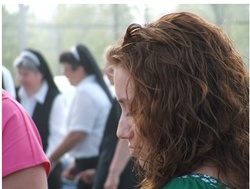 Books that even breathe the air of conspiracy theories rarely attract my interest, but I have been gathering for some time a variety of facts about women in ministry that are both unknown to the average Christian and, in my judgment, have been covered up. So, when I saw the title of Gary Macy‘s The Hidden History of Women’s Ordination: Female Clergy in the Medieval West
Books that even breathe the air of conspiracy theories rarely attract my interest, but I have been gathering for some time a variety of facts about women in ministry that are both unknown to the average Christian and, in my judgment, have been covered up. So, when I saw the title of Gary Macy‘s The Hidden History of Women’s Ordination: Female Clergy in the Medieval West, I was both wary and interested. The book proves something very important and I want to wander through this book in a few posts.

One way to begin is to set up the problem, and it’s clear. The Catholic tradition and official teaching aren’t up to individual decisions. Matters as serious as who distributes the Eucharist aren’t up to individuals — this is a matter that the pope and the official teachers of the RCC decide. And they’ve decided: males duly ordained.
What would happen if Roman Catholic scholars (or non-Catholic) discovered that in the first few centuries women were ordained? Protestants could shift, though it would take some serious work for some groups to change on ordaining women. (I make some proposals about this in The Blue Parakeet: Rethinking How You Read the Bible
.) The Catholic tradition though, in the 12th and 13th Centuries, made some serious judgments that led to ordaining only men for the eucharistic ministry.
So, when Gary Macy argues, as he will, that prior to those Centuries Roman Catholics did “ordain” women, he opens up more than a can of worms. He both opens up a fissure in the tradition and puts himself in a position of some serious criticism — and he’s gotten it. From no less a figure than the recently-deceased Cardinal Avery Dulles. But he makes his point: “This is a history that has been deliberately forgotten, intentionally marginalized, and, not infrequently, creatively explained away” (4).
Today I want to mention one more point: he contrasts the historical method with the theological method. Theology has made its decision: “According to this way of thinking, if women were (and are) incapable of being ordained, then they cannot have been ordained in the past” (5). But historians ask not if women in the past were ordained to the eucharistic ministry but what did the word “ordain” mean when it was used — often enough — of women in the RCC? Furthermore, they do their best to avoid approaching the ancient texts through the lens of current RC debates about women in the priesthood.
This is an academic book but written well enough that any serious student can both take it all in and enjoy the prose. To make the prose lighter, Macy took all technical discussions out and put them in the endnotes — so that half the book is prose and the other half notes, bibliography and appendices. Everyone interested in this question and every library need this book.
